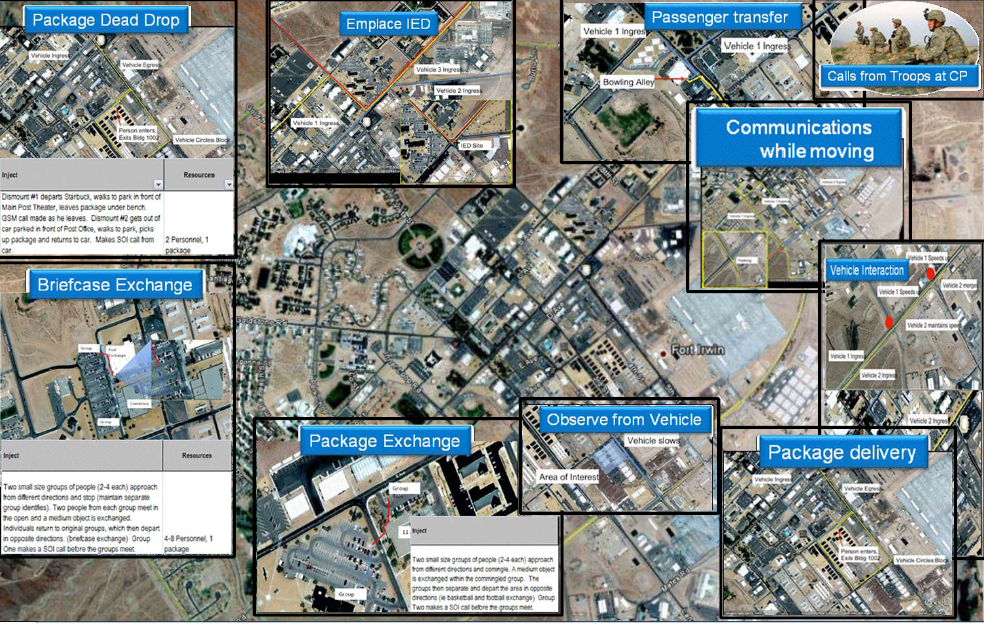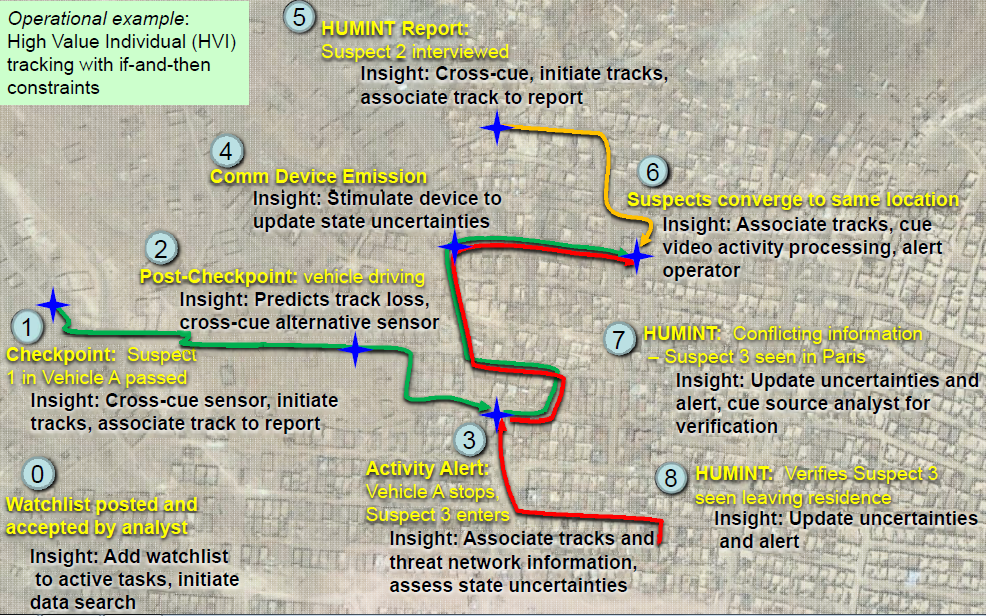One Brain, Hundreds of Eyes: DARPA Plots Manhunt Master ControllerWired (Link) - Adam Rawnsley (May 31, 2011)
Thought military tracking technology couldn�t get any creepier? Hold onto your tinfoil hats and hide behind the nearest curtain because the next generation of manhunting gear just took another step closer to reality. The Pentagon�s bleeding-edge research shop, DARPA, announced this week that it awarded a $14 million contract to defense contractor SAIC to build Insight, its system-of-systems effort to mashup snooping sensors that�ll find human prey on the battlefield. DARPA has developed loads of sensors and spying gear: everything from the 1.8-gigapixel Argus camera to the Vehicle and Dismount Exploitation Radar (given the wonderful acronym, �Vader�) that pinpoints humans, cars and trucks from a distance. But getting all these systems to mesh together so that your average grunt can form a picture clear enough to track a high value terrorist or insurgent in real time is tricky, to say the least. It�s a classic problem in intelligence work: too much information and too much trouble connecting the dots. The result is �information overload� in general, and �information underload� on specific targets. And that�s the problem that DARPA wants Insight to solve. It�s supposed to help users sift through the heaps of information collected by the U.S. military�s numerous sensor platforms to find just the right information, on just the right targets using the most appropriate combination of spying gear. DARPA wants Insight to integrate data from a dizzying array of sources. It�s hungry for info from ground moving target indicators, infrared video, multispectral imagery, human tipsters, audio intercepts, even text chats and social media, among others. The idea, though, isn�t to configure the program for a fixed set of inputs, but allow it to be flexible enough to �plug and play� with different sensors as needs dictate.
But Insight isn�t just supposed to be a warehouse for all the data soaked up by the military�s eyes and ears. It�s supposed to make sense of it, too. In a notice to researchers, Darpa states that the system needs to be able to perform �threat network detection/estimation,� �anomaly detection� and �behavioral (pattern-of-life) modeling including cultural, social, and insurgency dynamics.� In other words, Insight needs to get a feel for the rhythm of life in the areas it�s looking at, understand what kinds of threats its users are interested in and be able to automatically pick them out of the heaps of data and background noise. Just so Insight isn�t running off its own smarts alone, DARPA�s planning a number of tools to aid the human-software collaboration, including �visualization, hypothesis manipulation, and on-line learning� as well as other �algorithms and data processing technologies.� So how will Insight be used on the battlefield? Think high value targets, for one. Darpa says its spy system needs to be able to track so-called �high value individuals� (.pdf) and insurgents, even over the long term, across a range of settings from rural to urban. Insight�s also supposed to be capable enough to think one step ahead of the threats it tracks and anticipate their next move, like sniffing out a possible ambush. On the ground, it would play out like this. An analyst adds to a watch list the name of a particularly important insurgent. A sensor picks up someone who might be him driving past a checkpoint in Iraq. Insight automatically recognizes that he�ll soon drive out of range of the current sensor and switches over to a new snooping device closer by to pick him up down the road. It follows him as he picks up associates and drives to a meeting, keeping a constant watch on him as it shifts from sensor data to communications intercepts to the real-time reports of spies on the ground, ultimately verifying his identity. A system this complex, you can�t just dump in Iraq or Afghanistan. So Darpa is looking to set up an �incubator� � a sort of virtual world, where all these sensors and sensor-integrators can be tested out first. The pixelized place will pit the system against a battery of simulated sensor data and information collected from real world threats to see how it performs at tracking threats. Once it�s finished in the virtual world, it moves to meatspace testing at the Army�s National Training Center in Ft. Irwin, California. Only then would it go to an honest-to-God war zone. �
America ~ Technology |

